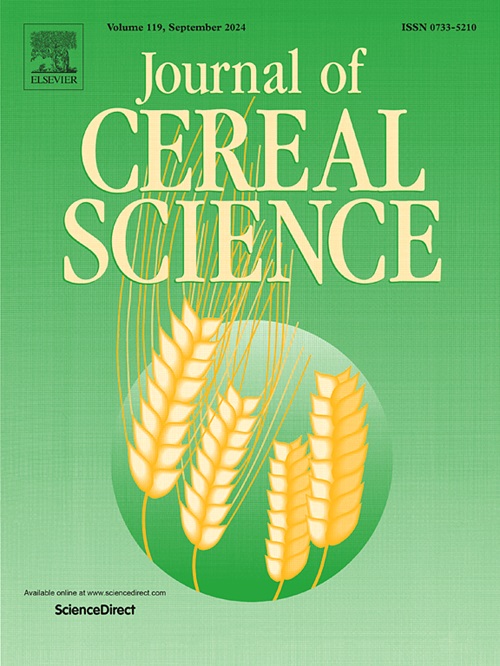微波掺入提高发芽糙米的干燥效率和理化抗氧化性能
IF 3.7
2区 农林科学
Q2 FOOD SCIENCE & TECHNOLOGY
引用次数: 0
摘要
本研究调查了热风干燥(HAD)、微波干燥(MD)和热风微波滚床干燥(HAMRD)对发芽糙米(GBR)干燥质量的影响,并以冷冻干燥(FD)作为对照。我们的研究结果表明,与 HAD 相比,MD 和 HAMRD 进一步缩短了干燥时间,分别缩短了 40% 和 71% 以上。HAMRD 的有效水扩散系数(Deff)和水活性(aw)分别在 8.56 × 10-10-1.29 × 10-9 m2/s 和 0.31-0.33 之间。在所有样品中,MD0.8W/g 的 ΔE 值(1.87)最低。温度升高和微波辐射降低了淀粉的相对结晶度,但提高了糊化度。硬度(106.57 N)和内聚性(0.11)在 HAMRD 70 °C 时最低,粘着性(20.71 N)和咀嚼性(9.73 N)在 HAMRD 70 °C 时最高。HAMRD 中蛋白质、总酚和总黄酮的平均含量分别为 111.32 μg/g、6.73 mg/g 和 4.11 mg/g。HAMRD 中 DPPH 和 ABTS 的平均抗氧化能力分别为 16.87 μmol TE/g DW 和 11.32 μmol TE/g DW。与其他三种干燥方法相比,HAMRD 是一种更高效、更有前景的 GBR 干燥方法,它能在质量保证和干燥时间之间取得平衡。本文章由计算机程序翻译,如有差异,请以英文原文为准。
Enhancing drying efficiency and physicochemical & antioxidant properties of germinated brown rice through microwave incorporation
This study investigates the effects of hot air drying (HAD), microwave drying (MD) and hot air microwave rolling-bed drying (HAMRD) on the drying quality of germinated brown rice (GBR) using freeze-drying (FD) as a control. Our findings revealed that MD and HAMRD further shortened drying time by over 40 % and 71 % compared to HAD, respectively. The effective water diffusion coefficient (Deff) and water activity (aw) of HAMRD were in the range of 8.56 × 10−10-1.29 × 10−9 m2/s and 0.31–0.33, respectively. MD0.8W/g owned the lowest ΔE value (1.87) among all samples. Temperature increase and microwave radiation decreased the relative crystallinity of starch, but enhanced the gelatinization degree. The lowest hardness (106.57 N) and cohesiveness (0.11), highest adhesion (20.71 N) and chewiness (9.73 N) were observed in HAMRD 70 °C. The average content of protein, total phenols, and total flavonoids in HAMRD were 111.32 μg/g, 6.73 mg/g, and 4.11 mg/g, respectively. The average antioxidant capacities of DPPH and ABTS in HAMRD were 16.87 μmol TE/g DW and 11.32 μmol TE/g DW, respectively. Compared with the other three drying methods, HAMRD is a more efficient and promising alternative for drying GBR, balancing quality preservation and drying time.
求助全文
通过发布文献求助,成功后即可免费获取论文全文。
去求助
来源期刊

Journal of Cereal Science
工程技术-食品科技
CiteScore
7.80
自引率
2.60%
发文量
163
审稿时长
38 days
期刊介绍:
The Journal of Cereal Science was established in 1983 to provide an International forum for the publication of original research papers of high standing covering all aspects of cereal science related to the functional and nutritional quality of cereal grains (true cereals - members of the Poaceae family and starchy pseudocereals - members of the Amaranthaceae, Chenopodiaceae and Polygonaceae families) and their products, in relation to the cereals used. The journal also publishes concise and critical review articles appraising the status and future directions of specific areas of cereal science and short communications that present news of important advances in research. The journal aims at topicality and at providing comprehensive coverage of progress in the field.
 求助内容:
求助内容: 应助结果提醒方式:
应助结果提醒方式:


